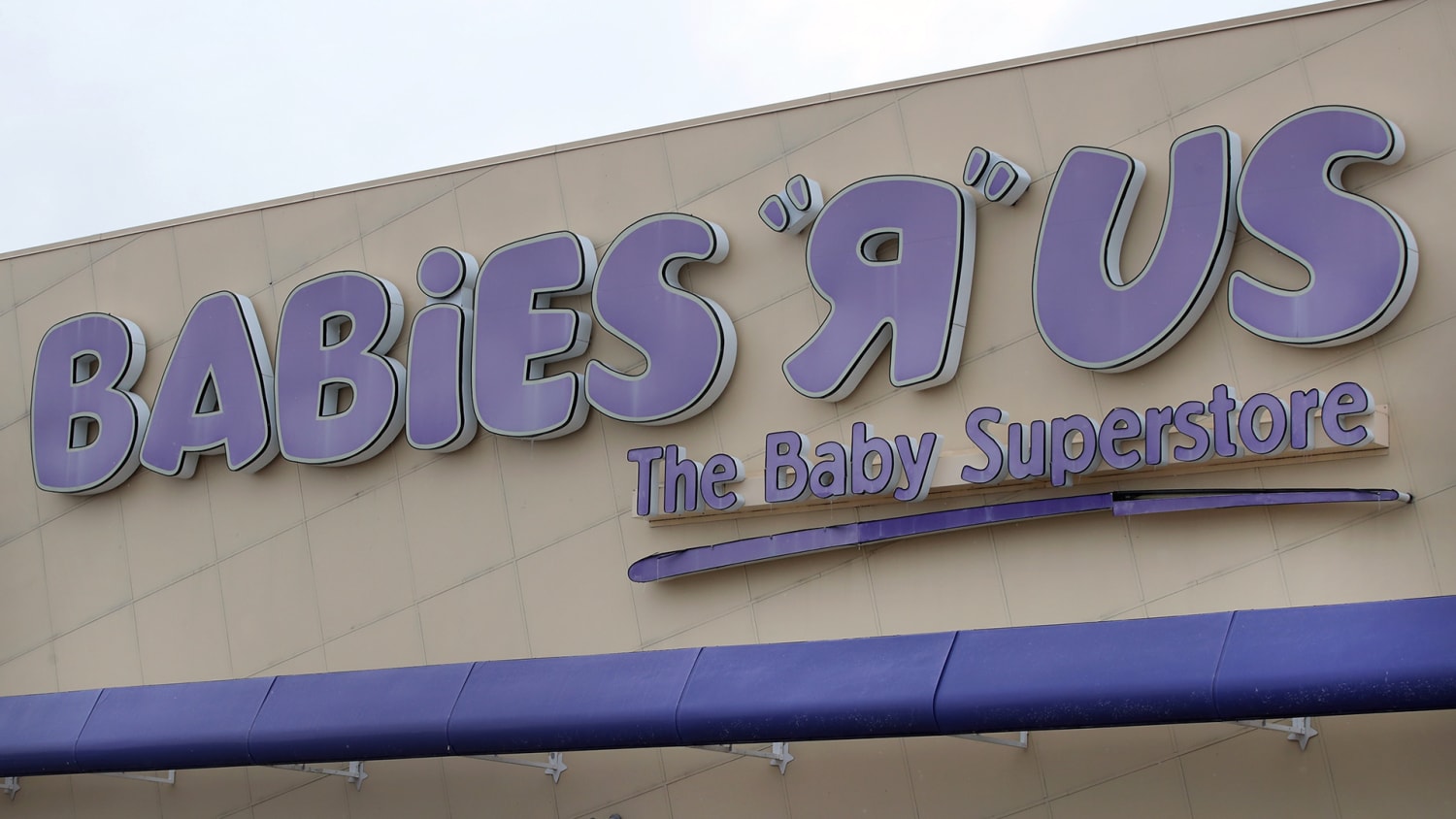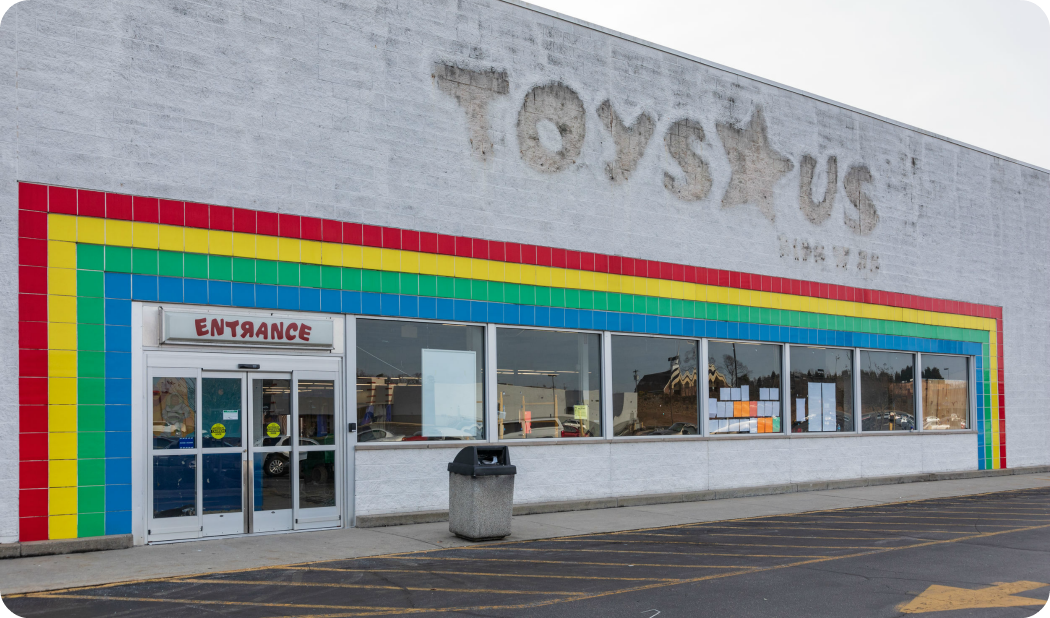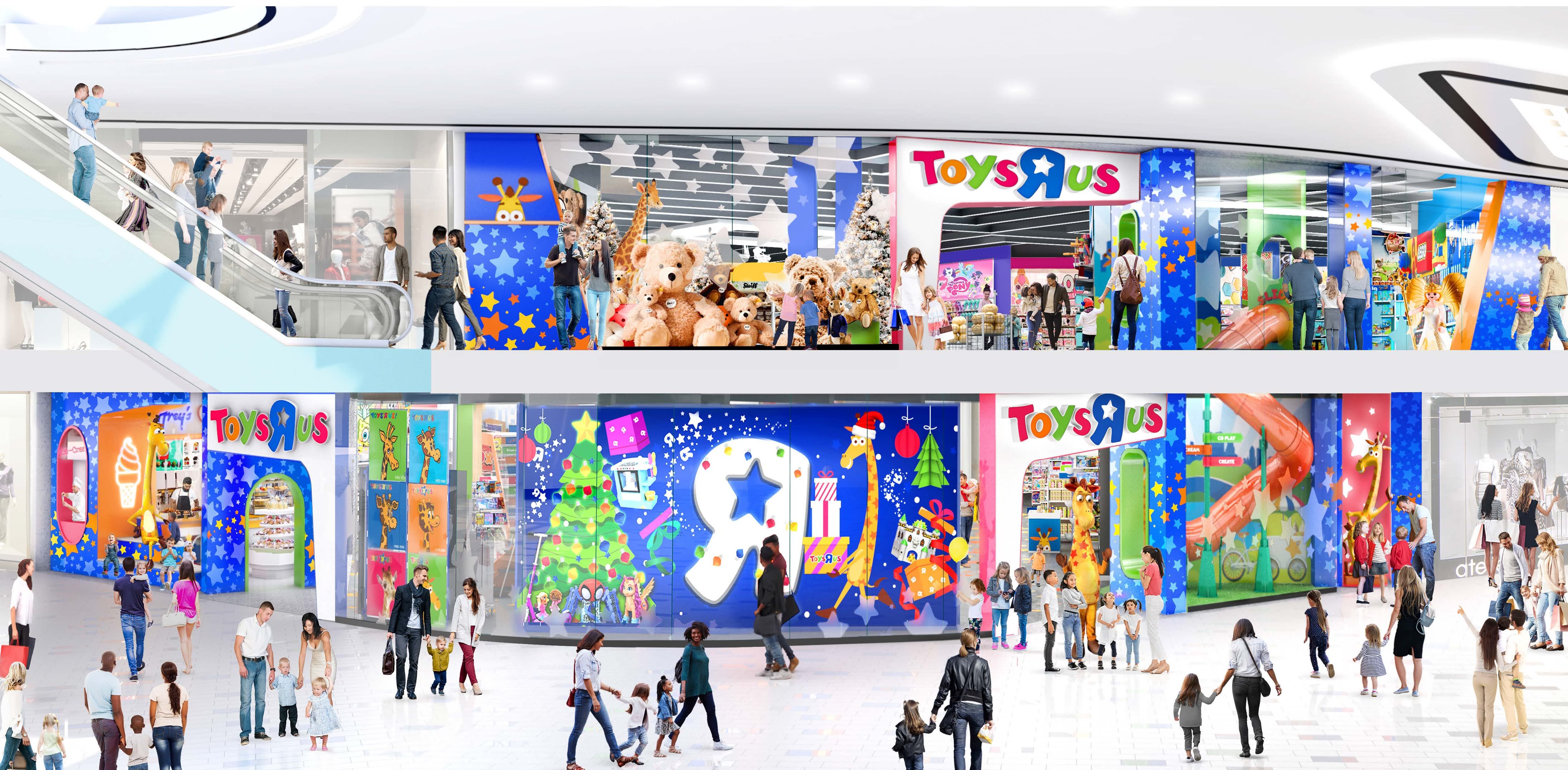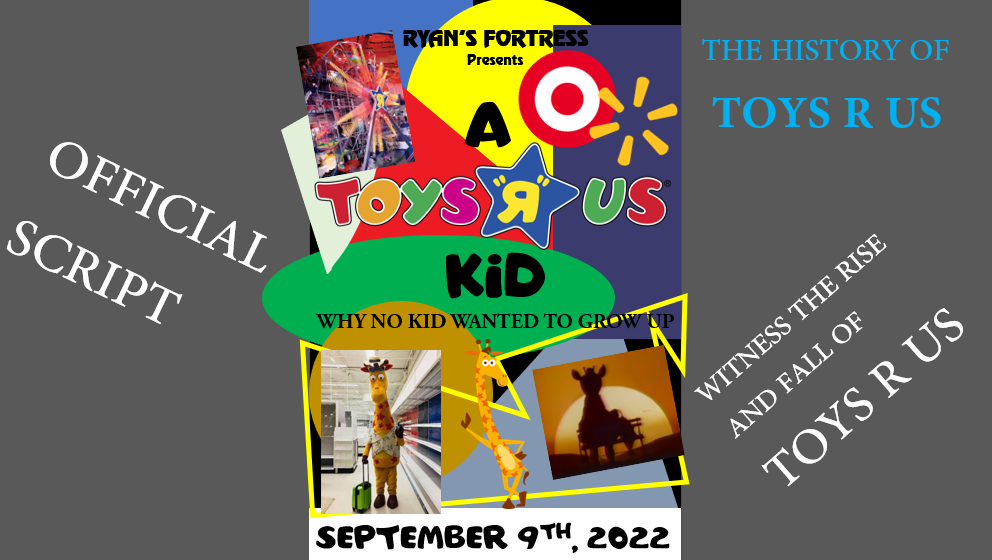For most kids in America who lived through the 80s into the 90s or were even a 2010s kid like me, Toys R Us might have been like your second home. It was more than just a toy store. It was a place of wonder, discovery, and fun. The joyful atmosphere among hundreds of thousands of toys was the place to be as a kid, even with a mascot being a silly giraffe. Toys R Us was every kid’s dream, with so much in store. Some of my favorite childhood memories were at my local Toys R Us. And for these many kids, they must have been heartbroken in 2018 when Toys R Us announced it was closing all of its U.S. stores. Children cried. Even adults were sad. It was most adults’ childhood toy store, and it was leaving for good. However, Toys R Us has made a somewhat resurgence in the last year, with a new store in the American Dream mall in New Jersey and coming to Macy’s stores. So, how did Toys R Us start, and what happened in the late 2010s? Why did America’s favorite toy store go bankrupt? This is the story of the rise, and fall, of Toys R Us: why no kid wanted to grow up.

Part One: Not Toys, Babies
In April of 1948, Charles Phillip Lazarus, an American entrepreneur, opened a baby furniture store in his father’s old bicycle shop located in Northeast Washington. It was opened at the beginning of the baby boomers era. This was a time after World War II when those who served in the war came home to get married and have children. Lazarus was in the war, too, and he heard people say that they were starting families. In an interview with Entrepreneur in 2008, Lazarus stated “Everyone I talked to said they were going to go home, get married, have children, and live the American dream.” So he opened Children’s Bargaintown. The store was a baby furniture store, with everything parents needed to care for their newborn children. At first, the business seemed successful to Lazarus. However, he realized that parents usually won’t revisit for a second child, and just reuse their strollers and cribs for the next kid. So he started selling toys at Children’s Bargaintown. The toys were not very expensive, but proved to be a successful business. But it didn’t stop there. Soon, Lazarus expanded into the toy industry, wanting to open his own toy store. But his idea wasn’t like a mom-and-pop toy store. It was essentially a supermarket – but with toys instead of groceries. A huge big-box store with aisles and aisles of toys. In 1957, he renamed his company and opened the first ever big-box toy store ever: Toys R Us.
Part Two: The Toy Emporium
“Lazarus’ stores, on the other hand, were orders of magnitude larger than their competitors, and presented a smorgasbord of thousands of different toys.” said History.com in their rise and fall of Toys R Us article. The big-box, supermarket approach toy store, Toys R Us, opened in 1957. The name came from Charles’ last name, Lazarus, which looked and spelled like Laza R Us. Therefore, Toys R Us. The R was supposed to be backward to look like a toddler designed the logo. The store proved to shock consumers with its impeccable size and wide abundance of toys. The store had everything. In its ads, Toys R Us still included the name “the Children’s Bargaintown”, but soon would move away from that name. Toys R Us was designed as a fun, decorative place. Colored floor tiling, easy layouts to know where to find a specific toy. It was as if Lazarus made it fun to both shop or just enjoy running around in the store. It was unlike anything anyone had ever seen before. People were used to the “mom-and-pop shops”, small toy stores with a limited stock of small-scale toys. Nothing like Toys R Us. Soon, Jewish toymakers in the industry came in. Issac Heller, a man who turned military surplus into toys for young male children. Elliot Handler, creator of the Mattel company and released the first Barbie dolls in 1959. Milton Levine, who made the famous Milton’s Ant Farm throughout the 50s and 60s. Famous toys of the decades were starting to come out. Remember the Easy-Bake Oven or Mr. and Mrs. Potato Heads? Most kids who had one got it at Toys R Us.

Part Three: The Giraffe
It seemed like every year, Toys R Us was expanding in some way. In 1966, Charles Lazarus sold the Toys R Us company to Interstate Sales for 7 and a half million dollars. However, he still was with the company, becoming the head of Interstate’s toy division, which meant he would oversee everything about the Toys R Us stores. Toys R Us was growing, and still the most popular toy company. But there was one big aspect to point out. A very tall, cartoonish aspect. In 1965, people first witnessed the company’s mascot: a giraffe called Dr. G Raffe. However, this mascot was mainly for Children’s Bargaintown, not as much as Toys R Us. But that all changed when the giraffe mascot visited Toys R Us commercials in the 70s. A sales associate renamed the mascot Geoffrey, and he’s kept the name ever since. This giraffe was made to be more lifelike than Dr. G Raffe, but still cartoonish at the same time. In 1973, he appeared in his first commercial, but his famous commercial debuted later. That commercial featured various children (and Geoffrey at one point) singing the company theme song: “I’m A Toys R Us Kid”. Geoffrey became a Toys R Us icon, and since the 60s to now, he’s been through a few design changes, but has always been Geoffrey, Toys R Us’s silly giraffe mascot.

Part Four: The Toy Golden Age
It didn’t look good for Interstate Sales. In 1974, Interstate filed for bankruptcy. The court put Charles Lazarus in charge of recuperating the company. By the late 70s, Lazarus made the Toys R Us company public and started trading with the New York Stock Exchange. Their new headquarters was in Paramus, New Jersey. As Toys R Us continued to grow, new ideas came in. One of these was another line of stores: a clothing store for children called Kids R Us. The first Kids R Us store opened in February of 1983 in Paramus, New Jersey and Brooklyn, New York. Then, in April of 1996, the company opened another spinoff store called Babies R Us. It was a baby clothing store similar to Lazarus’ original store, Children’s Bargaintown. But in 1994, Lazarus did something interesting. He stepped down in his role and became chief executive, which USA Today stated, “kicking off two decades of frequent management changes.” Then, something surprising happened. In a report in 1998, Walmart, a big-box superstore that also sold toys, beat Toys R Us, receiving the honorable title of top US toy seller. It was the first time a store beat Toys R Us by selling toys. At this time, Toys R Us’s big-box store war had begun.

Part Five: Rise of the eStore
It was at this time when the Toys R Us downfall began. They did still have success, like their new flagship store in 2001 located in Times Square in New York City, including a ferris wheel several stories high and a giant animatronic dinosaur. But there were some failures, too. In 2003, the company closed all of its operating Kids R Us stores, permanently. In 2001, Toys R Us relocated its headquarters from Paramus to Wayne, New Jersey for $36 million. Then, in 2005, three private equity firms: Bain Capital, Vornado Realty Trust, and Kohlberg Kravis Roberts purchased the Toys R Us company for 6.6 billion dollars. The purchase brought Toys R Us private once again. USA Today stated, “The plan is to boost sales and position the company for a stock offering in a few years that would let the investors cash out.” As all of this was going on, the rise of the eStore was beginning. Amazon, an e-commerce online superstore was founded by Jeff Bezos in 1994, and by the 2000s, the company was booming; Target and Walmart were also going online; and then there were the smaller companies, such as eToys founded in 1997. There were also the other toy stores, such as the popular F.A.O. Schwarz. In 2009, Toys R Us acquired both F.A.O. Schwarz, eToys.com, and the famous K•B Toys toy store. In 2010, the company went public once again. However, this wasn’t exactly an event that saved Toys R Us. By 2011, the downfall was just beginning.

Part Six: Downfall
I was a Toys R Us kid in the 2010s, and I can safely say that it was indeed a magical time. I loved Toys R Us very much. However, I can’t speak for everyone. Toys R Us stores were very different compared to the 90s in the 2010s. There were three big reasons. One, Toys R Us was supposed to be the big-box toy store. A supermarket for toys, but others took that idea, too. Walmart and Target were also big-box stores that overshadowed Toys R Us. They not only had basically everything — from books to electronics to groceries to clothing to baby clothes. Electronics? Toys R Us. Clothing? Kids R Us. Baby clothes? Babies R Us. It was all the Toys R Us stores and spinoffs in one store, plus even more. And to make it worse, there were toy sections at both Walmart and Target, too! While they weren’t as big as Toys R Us, they still held the big toys and the electronics section had the game consoles Toys R Us had. Second, Toys R Us was slashing prices constantly. While this might have been a good thing, an already struggling company shouldn’t be putting all of their stuff on an epic clearance. But if they didn’t make them cheap enough, consumers would preferably buy the item on Amazon or go to Walmart for the cheaper price. Why buy a whiteboard for $30 at Toys R Us if it’s at Walmart and Amazon for $20? Third, the company was dealing with so many price cuts and ways to overcome the competition and economic struggles that they focused less on the toys themselves. In the 2010s, Toys R Us definitely wasn’t as joyful as they were in the 80s and 90s. The stores are also obviously a bit aged. It was a magical store to me, but even at 7 years old I didn’t think it was like a wonderland. It didn’t feel as much like a dream store compared to somewhere like Duncan’s Toy Chest from Home Alone 2 or even F.A.O. Schwarz in New York City, which was disappointing. In 2015, a man known for his time as CEO of Domino’s Pizza, Dave Brandon, took over the Toys R Us company as the 4th CEO in nearly 2 decades. That same year, the legendary New York City F.A.O. Schwartz and beloved flagship Toys R Us stores closed permanently. Consumers knew that this probably meant the same treatment would happen to other small-owned companies Toys R Us had purchased in the past decade — and possibly even the Toys R Us stores line itself.

Part Seven: You Can’t Be A Toys R Us Kid Anymore
I don’t want to grow up. I’m a Toys R Us kid. Children all over the country, even around the world were Toys R Us kids. Children loved the store. It was like a supermarket for toys; the first bix-box toy store; and it had everything. From bikes to trains to video games, it’s the biggest toy store there is. Gee wizz. Nobody wanted to grow up, ‘cuz baby if they did, they couldn’t be a Toys R Us kid. More games, more toys, oh boy! But nothing lasts forever. By 2016, the company was in over $5 billion worth of debt, and were struggling to pay it off. Ecommerce wasn’t helping, as it was boosting in sales as Toys R Us was losing in sales. Most people went to Toys R Us, found something they liked, and just bought it on Amazon for the cheaper price. This practice is normally known as Window Shopping, in which people look for an item at one place just to buy it somewhere else with the cheaper price tag. Even though I did indeed love Toys R Us, I can’t say that by 2017 I was buying much there. Most of it was either on Amazon or at Target. And I wasn’t alone. From the billions of dollars of debt, low sales numbers, and unbeatable competition, Toys R Us lost the lead it once had. In the 90s, Toys R Us was the number one store and no one could beat it. Twenty years later, and it looked like the company was at a dead end. There was nowhere left to go. Said The Washington Post, “Analysts cited many reasons for the company’s demise: Lousy in-store customer service, a second-rate website and prices that are often higher than at many of its big-box competitors. Add to that piles of mounting debt — much of it dating to a 2005 leveraged buyout — and it was clear, many said, that the 60-year-old brand was in trouble.” In late 2017, Toys R Us filed for Chapter 11 bankruptcy. The Toys R Us downfall had ended, and not with Toys R Us winning the battle. By March 2018, the company planned to close all of its 800+ stores across the US. Said The Washington Post, “You can’t be a Toys R Us kid anymore.”

The story of Toys R Us is a story of success, good ideas, popularity, sadness, and bad economic decisions. Toys R Us died because of high prices, lots of unpaid debt, and the failure to compete with the new big-box stores. However, it has started to come back in a way with a new flagship store in the American Dream Mall in New Jersey, along with Toys R Us sections in Macy’s stores. Toys R Us has always been a place of fun, joy, and, of course, toys. Toys R Us will always be remembered as the greatest toy store there is. Why no kid wanted to grow up was because they always wanted to be a Toys R Us Kid.


